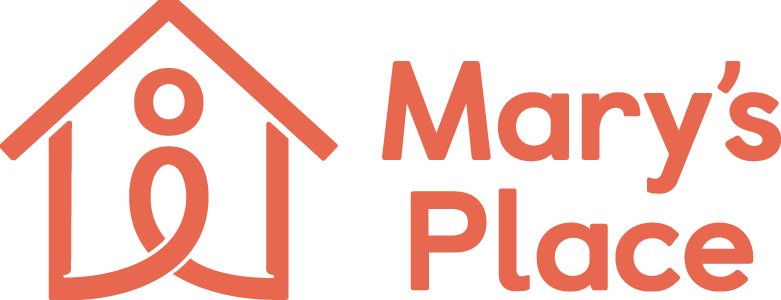
mary’s place faqs
what is mary’s place?
Mary’s Place is a nonprofit organization that ensures that no child sleeps outside by centering equity and opportunity for women and families. Mary's Place opened in 1999 as a drop-in day center for single women experiencing homelessness in downtown Seattle. They opened their first emergency family night shelter in 2011 and currently operate three 24/7 overnight family shelters providing 650 beds.
what services does mary’s place provide?
Mary's Place addresses the basic needs of some of our community's most vulnerable residents - families with children experiencing homelessness. We do this with a proven and innovative three-pronged approach.
SHELTER - At our overnight family shelters, we provide safe shelter along with resources and referrals to social services, medical care, legal and financial aid, housing, and employment for families with children. Health and wellness are promoted through referrals to doctors, nursing and naturopathic care, behavioral health, and daily groups that offer support, encouragement, and skill-building. Each family in shelter is immediately assigned a housing specialist to help them develop and implement a plan for moving quickly to stable housing. Mary's Place Housing Locators work with hundreds of landlords in the region to build relationships and provide housing options for our families.
OUTREACH - The Emergency Family Shelter Intake Line for King County is taking calls from families seeking shelter at unprecedented rates. Each day, 50-60 families call for help, and only 2-3 will be offered shelter. There isn’t enough shelter capacity to meet the growing need. The Mary's Place mobile outreach team works with unsheltered families in tents, cars, and area hospitals to address barriers and help families move directly into housing. This innovative approach is cost-effective and has become a national model for providing homelessness services for families.
PREVENTION - But what we need to do as a community and a nation is prevent homelessness from happening in the first place. Homelessness prevention, through rental assistance and stability support, is cost-effective and prevents the trauma of homelessness, especially for children. We know that the most significant predictor of future homelessness is past homelessness. We can intervene to stop the generational cycle of homelessness to ensure our children thrive and build stronger communities. Mary’s Place Prevention team is working with the Lab for Economic Opportunities (LEO) at Notre Dame to test several variables around prevention funding to develop best practices to scale and grow this critical work.
who does mary’s place currently serve?
Two-parent families and their children, single parents of all genders and their children, extended families, and families with pets who are experiencing homelessness. Our guests range from young adults to seniors and represent diverse backgrounds in race, ethnicity, class, sexual orientation, education, and life experience. More than 80% of our guests identify as Black, Indigenous, or People of Color—many struggle with disabilities, and some with mental health issues. Our Popsicle Place program provides shelter and care for families who have lost everything while managing the needs of a critically ill child.
how is mary’s place different from other homeless shelters?
Mary's Place is one of the few organizations that offers crisis response shelter and day center services for families with children experiencing homelessness. We prioritize families with young children, pregnant women and new moms, and families with critically ill children. Mary's Place meets basic needs such as hygiene, shelter, food, and clothing, and provides access to tools, information, support groups, and resources to find housing, employment, and medical services. Using a three-pronged approach to addressing family homelessness, Mary’s Place uses a data-informed model to establish tested and innovative best practices.
how do people become homeless?
Each person's story is unique, of course. Common causes include divorce, violence, an illness or accident with no medical insurance, loss of a job, drug or alcohol addiction, or mental illness. There is a direct correlation between rising rents and rising homelessness. Racism and homelessness are inextricably linked. Black and Indigenous Americans are significantly more likely to experience homelessness. In King County, only 6% of people identify as Black and .9% as Native American, yet 40% of our families experiencing homelessness at Mary's Place are Black and 2% Native American. The disproportionality is staggering. We cannot address homelessness without first addressing the underlying structural racism.
who is mary?
Mary's Place began as a program of the Church of Mary Magdalene, a non-denominational gathering place for women experiencing homelessness, and received its 501c3 status in early 2012.
what do families experiencing homelessness do at mary’s place?
Families find resources for social and health services, benefits, housing, and employment within a community of support. Most are working, often several jobs. Through groups and classes, they strengthen their coping and financial skills. Children are connected to schools, visit Kids Club for age-appropriate activities, and help with homework. At Mary's Place, families find safety, tools and resources, and community.
where do families go when they can’t get into a shelter at night?
Many stay with friends or sleep in their cars. Through the generous support of our community, Mary's Place provides emergency night shelter to families experiencing homelessness at two locations in King County. These shelters provide a safe place for families to stay together while they search for permanent housing. Still, there isn’t enough room, and hundreds of families and children are sleeping outside in our community.
how is mary’s place funded?
Mary’s Place receives funding from five sources: individual donors, foundations and grants, corporations, and congregations.
how do families experiencing homelessness reach mary's place about shelter?
Families who need a place to stay tonight should call the King County Emergency Family Shelter Intake Line at 206-245-1026 for information and assistance.
